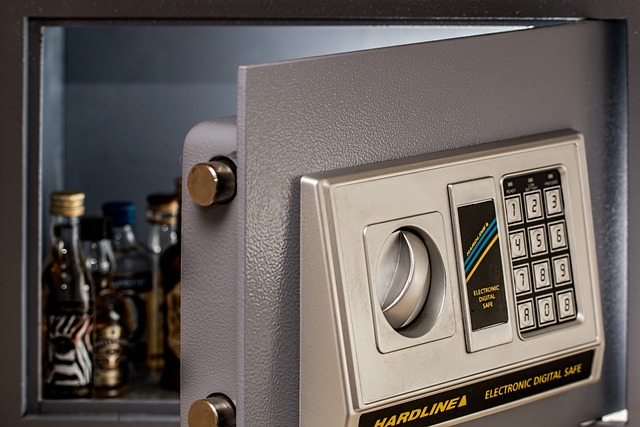Safe Installation: Guide to Secure Home Protection
Installing a safe is a practical step toward improving household security and protecting valuables from theft, fire, and unauthorized access. Proper installation affects how well a safe performs in real-world scenarios: placement, anchoring, and integration with existing home security systems all matter. This article explains the technical and practical considerations for safe installation, how different choices affect protection, and how to work with local services to get a reliable result.

What makes a safe secure for home use?
A safe’s security starts with its construction — materials, locking mechanism, and internal layout — but installation determines whether those features work as intended. A poorly anchored safe can be carried away; a wall-mounted unit may be vulnerable if fixed into weak materials. Consider safes with robust bolt-down points and internal steel plates for anchoring. Also evaluate lock type: mechanical dial locks, electronic keypads, and biometric locks each have different maintenance and failure modes that affect long-term security.
Safes with specified fire and water resistance add layers of protection beyond theft prevention. Fire ratings indicate how long a safe maintains internal temperatures low enough to protect documents and electronics; water resistance can protect contents from sprinkler systems or flooding. When installing, maintain recommended clearances and avoid placing safes directly against external walls where temperature extremes or moisture could reduce fireproofing effectiveness.
Where should you install a safe in your home?
Choosing the right location balances accessibility, concealment, and structural suitability. Common locations include closets, basements, or built-in cabinets, but hidey-holes are not always the safest option if structural anchoring is limited. A ground-floor interior location on a concrete slab provides excellent anchoring options; upper floors require verification of joist strength and may need reinforcement. Avoid attic installations where temperature swings or moisture can harm contents and house settling could compromise mounting.
Think about how a thief would approach your home; placing a safe in a regularly used but concealed area (like a bedroom closet) can deter opportunistic theft while still allowing owner access. Also consider emergency access for first responders: do not block exits or create hazards when positioning a heavy safe. If integrating with a monitored security system, ensure the chosen location has reliable sensor coverage and communications.
How does proper installation reduce theft risk?
Installation choices directly affect how difficult it will be for an intruder to remove or tamper with the safe. Bolting a safe to concrete or anchoring it to a load-bearing wall increases the effort and time required to remove it, which reduces theft risk. Additionally, installing safes in less obvious spots and using concealment measures—cabinet fronts, false bottoms, or furniture enclosures—adds time and uncertainty for an intruder, often deterring theft altogether.
Complement physical installation with alarm sensors or vibration detectors mounted on or near the safe, and ensure any electronic locks are backed up by reliable battery systems to prevent accidental lockouts. When installers drill anchor points, they should use anchors sized to the safe’s weight and documented manufacturer recommendations to maintain rated security performance.
What features improve safe protection after installation?
Several installed features enhance protection: professional bolting kits, fire-resistant seals, and tamper-proof hinges or hinge guards. A professionally installed bolt-down kit uses anchors that match the substrate—concrete, masonry, or wood joists—and distributes load to prevent anchor pull-out. Fire seals and insulated composite linings preserve internal temperatures; ensure installation doesn’t compress or damage those seals, which can reduce effectiveness.
Integration with home security systems provides an additional layer: a monitored contact or vibration sensor tied to an alarm or smart home platform can notify homeowners or a monitoring service the moment tampering begins. Keep maintenance in mind—periodic checks of anchor integrity, battery replacement for electronic locks, and verification of combination or access codes maintain protection over time.
How to choose local services for safe installation?
Selecting qualified local services involves confirming experience with the type of safe you own, insurance and licensing where applicable, and clear documentation of work performed. Look for installers who follow manufacturer installation guidelines and can provide references or photos of past jobs. Ask whether the installer will assess mounting substrates, recommend reinforcement if needed, and supply appropriate anchor hardware rated for the safe’s weight.
Request written estimates that describe scope of work, recommended anchor types, and any modifications required to floor or wall structures. Verify whether the installer offers post-installation testing such as torque checks on anchors and functional testing of locks. If you plan to integrate alarm sensors, ensure the installer coordinates with your security provider or can install compatible components for reliable protection.
Conclusion
Safe installation is a combination of selecting the right product, choosing an appropriate location, and ensuring correct anchoring and integration with other security measures. Thoughtful placement and professional mounting increase resistance to theft and environmental threats while preserving functionality for everyday use. Regular maintenance, compatibility checks with home security systems, and choosing experienced local services help maintain your safe’s protection over time.






